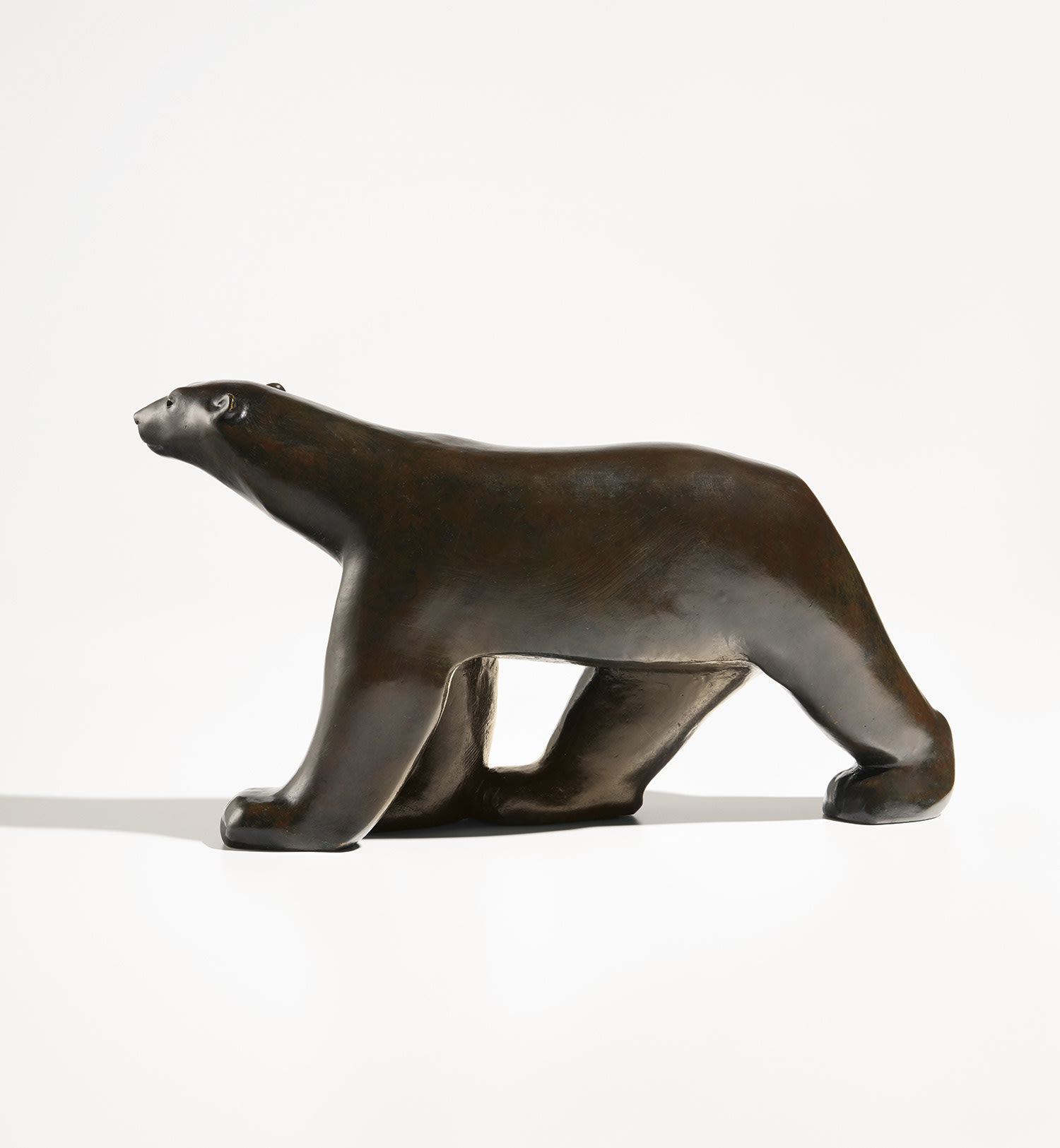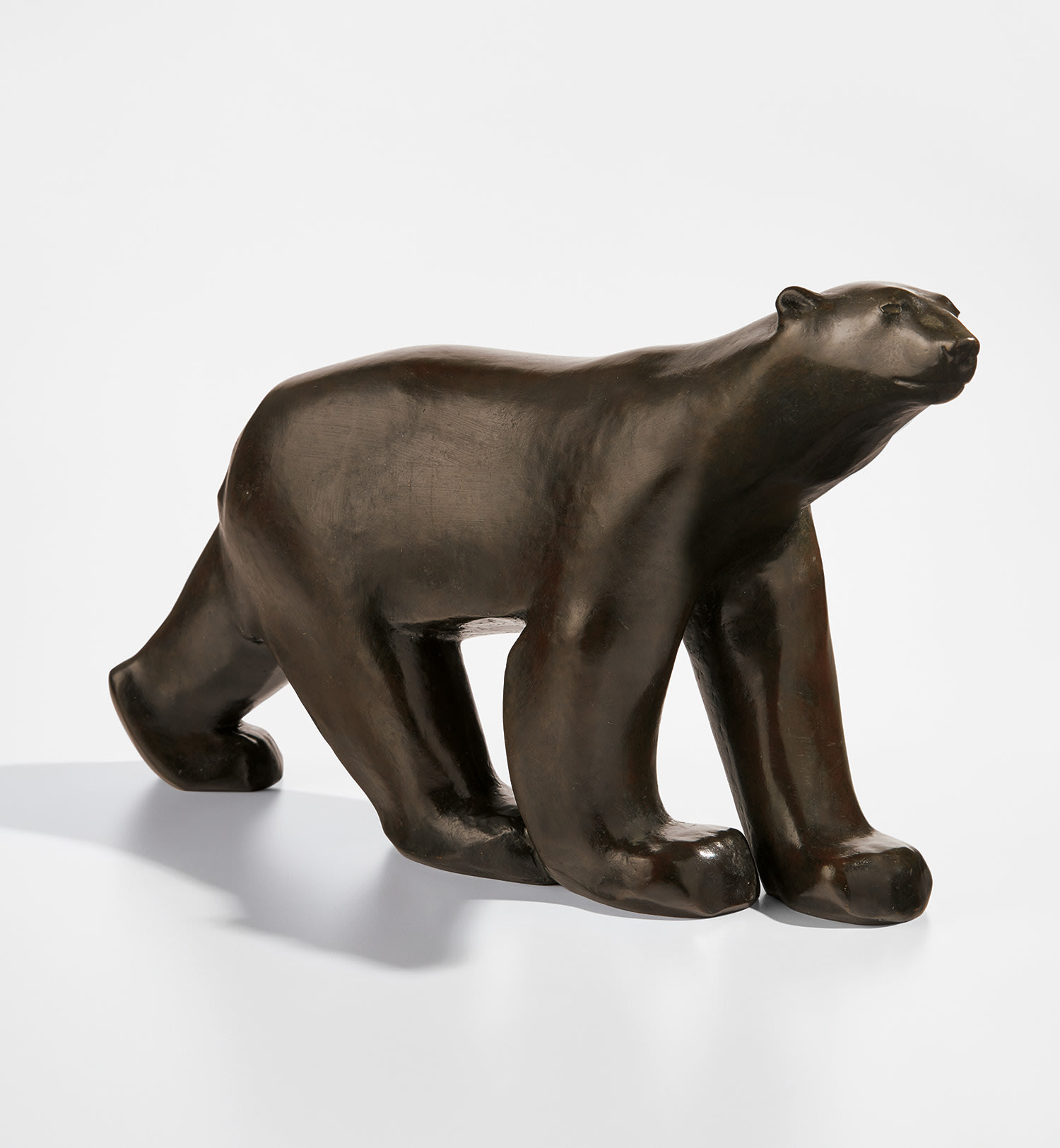







Property of a Lady
37
François Pompon
"Ours blanc"
conceived and executed 1923
Patinated bronze.
9 3/4 x 4 1/2 x 17 1/2 in. (24.8 x 11.4 x 44.3 cm)
Cast by C. Valsuani Foundry, Paris, France. Underside of anterior right foot incised C.VALSUANI/PARIS/CIRE PERDUE and posterior right foot incised POMPON/1. Together with a certificate of authenticity from Liliane Colas.
Full-Cataloguing
In 1922, François Pompon unveiled his monumental plaster sculpture Ours blanc at the Salon d’Automne to great fanfare. Though underrecognized at the time—despite being well into the second half of his career—the work afforded Pompon critical acclaim and financial independence. Over the next eleven years the artist would go on to create variations—in form, size, and materials—of his iconic bear. Drawings held by the Musée du Louvre indicate that Pompon began experimenting with this form as early as 1920, when he began sketching the outlines of a similar form. Though Pompon had great experience sculpting expressive human forms under the guidance of masters such as Auguste Rodin and René de Saint-Marceaux, Pompon’s true love was animals. The artist frequently visited the zoos at the Jardin des Plantes where he would sketch the animals on view. Pompon’s sketches of the bear also reveal his experimentation with the placement of the animal’s paws. Early examples show the bear with its front paws in alignment, while others show the animal in majestic stride. It seems as though Pompon eventually preferred presenting the animal in motion, as these are the examples that he continued to create until his death in 1933. And, in fact, it is this sense of movement coupled with his sleek reduction of form that characterize Pompon’s best work and which make the present model his highest achievement. Describing his process, the artist said, “I keep a large number of details that will later go…I first do the animal with almost all its trappings. Then I gradually eliminate them."
Pompon created the present form for just over a decade in a variety of sizes and in plaster, ceramic, and marble. The present example was conceived and executed in 1923, after Pompon decided to have the right paws touch, allowing him to create an even more dynamic form than his nearly life-size example from 1922—which now belongs to the Musée d'Orsay. Marks on the underside of the sculpture indicate that this example is the artist’s proof 1, for the model in bronze and of this new size, and that it was cast by C. Valsuani Foundry, the leading foundry in Paris which executed the works of Pompon and other masters of early 20th century sculpture.
Pompon created the present form for just over a decade in a variety of sizes and in plaster, ceramic, and marble. The present example was conceived and executed in 1923, after Pompon decided to have the right paws touch, allowing him to create an even more dynamic form than his nearly life-size example from 1922—which now belongs to the Musée d'Orsay. Marks on the underside of the sculpture indicate that this example is the artist’s proof 1, for the model in bronze and of this new size, and that it was cast by C. Valsuani Foundry, the leading foundry in Paris which executed the works of Pompon and other masters of early 20th century sculpture.